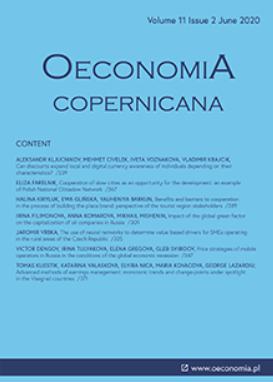Separating aggregate discouraged and added worker effects: the case of a former transition country
Separating aggregate discouraged and added worker effects: the case of a former transition country
Author(s): Emilio Congregado, Ewa Gałecka-Burdziak, Antonio A. Golpe, Robert PaterSubject(s): Labor relations, Human Resources in Economy
Published by: Instytut Badań Gospodarczych
Keywords: discouraged worker effect; added worker effect; vector autoregression; sign restrictions;
Summary/Abstract: Research background: We analyse the added worker effect (AWE) and the discouraged worker effect (DWE) from an aggregate perspective. The first effect refers to an increase in labour force participation in response to a decrease in the wage rate. The second effect refers to the decision by workers who have been unsuccessful in their job search to leave the labour market or to decrease their labour force participation. For our analysis, we use the case of Poland, a country with a persistently low labour force participation rate. Purpose of the article: While previous studies focused on the net of the two effects, we aim to analyse the two effects both separately and simultaneously. We propose a new approach for analysing the two effects. We generalise and model them as resulting from different shocks: (I) the AWE as the result of a negative wage income shock, and (ii) the DWE as the result of a positive job search time shock. The underlying assumption is that both shocks have at least a transitory effect on the labour force participation rate. However, we also track the potential long-lasting effects of these shocks, and we analyse the reactions of gender and age groups to them. While this approach demonstrates the robustness of our results, it also provides the range of the sensitivity, as it shows that there are large differences in the magnitude of the AWE and the DWE for different labour market cohorts. Methods: We use the multivariate unobserved component model to extract the AWE and the DWE, and we then use VAR models, applying sign and exclusion restrictions to model the underlying shocks. We use quarterly data for Poland in 1995–2019. Most of these data come from the Labour Force Survey, while the rest come from Statistics Poland. Findings & value added: In contrast to previous literature, which analysed only the net effect of the two effects, we model the AWE and the DWE separately. Contrary to the findings of previous research, our approach seems to confirm that both effects are simultaneously present in the labour market, and both effects influence the labour force participation rate. Thus, we find that both effects are significant. Specifically, we show that the AWE is stronger, but transitory; while the DWE is weaker, but long-lasting.
Journal: Oeconomia Copernicana
- Issue Year: 12/2021
- Issue No: 3
- Page Range: 729-760
- Page Count: 32
- Language: English

